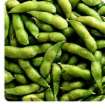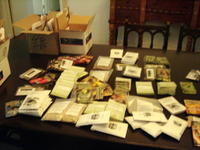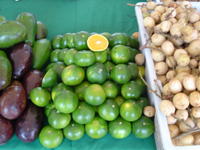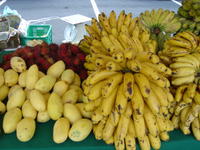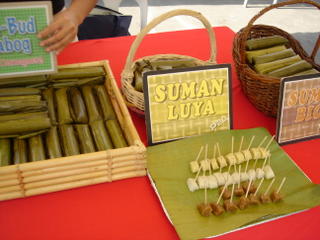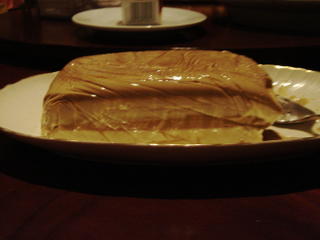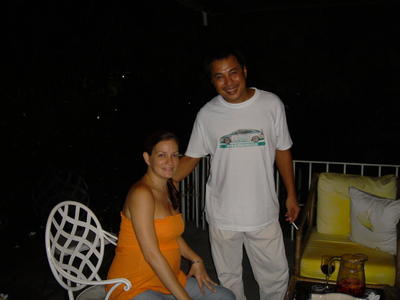Some plants and/or seeds I will be getting in Los Banos:
Local Fruits & Vegetables:
Papaya - I like the firmer and sweeter orange fleshed one compared to the yellow which tends to get mushy when ripe
Banana, 3 kinds – Latundan (pale orange in color, similar in texture as the African or South American Chiquita banana) ,
Lakatan (pale yellow in color and very creamy in texture), Saba (needs to be cooked to soften, normally
used in cooked desserts or savory dishes)
Pineapple - I have to make sure I get the less fibrous kind...
Pechay (similar in looks and taste to Swiss Chard) - Is it Swiss Chard?
Sayote - can eat both the fruit and leaves which are delicious made into a salad
Malungay - is actually a tree with edible small dark green oval leaves, good with eggs and in soups
Ampalaya (Bitter Melon) - has a bitter but oddly satisfying flavor, good with eggs and mixed with meat dishes
Camote (similar in taste to sweet potato, has cream colored flesh with deep purple veins) - really yummy fried with sugar
or used in bread mmmmmmmm!
Ube - I think this deep purple root is endemic to the Philippines, it is used to make a delicious pasty jam, cake or in ice
cream. I plan to experiment and use it to make bread...
Calamansi - a sour lemony citrus used to make juice and as flavoring in sweet and savory dishes
Pili Nuts - another edible endemic to the Philippines?
Calabasa (Squash)
Beneficial & Ornamental Plants: several varieties of Bamboo, Marigold and other plants I find interesting and aesthetically pleasing. I have to see whats available.
Herbs: Dill, Basil, Coriander, Thyme, Oregano, Marjoram, Tarragon, Sage, Rosemary and other herbs I might find.
It would be nice if I had a book that listed all the local fruits and vegetables. Most of what we find in the groceries were brought over from either the US or Europe. I would definately like to add more of the local varieties in my garden.
